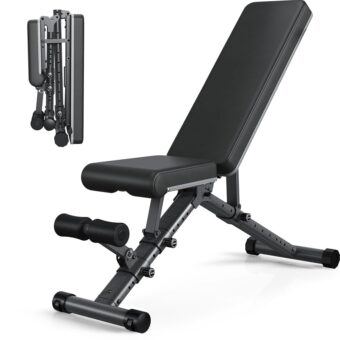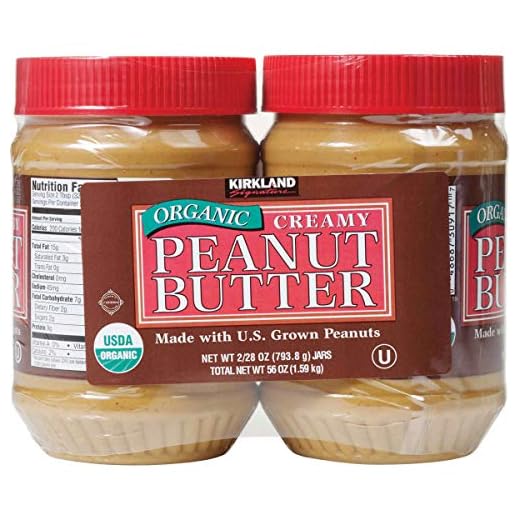Looking to shed weight safely and consistently? In this guide, we’ll show you exactly how to lose 2 pounds per week with a simple, effective meal plan that’s easy to follow and backed by nutrition science. Discover portion tips, calorie goals, and delicious food ideas to stay on track without starving or stressing. Perfect for beginners and anyone seeking sustainable fat loss!
The First Step: Setting the Stage for Success
Are you ready to build the foundation for lasting success?Start by calculating your daily calorie needs to create a realistic deficit; for most, reducing intake by 500 to 1,000 calories per day leads to losing about 1 to 2 pounds weekly. Tracking meals with an app or journal sharpens awareness and keeps portions in check—studies show people who log food lose up to 50% more weight. Planning grocery trips around fresh, whole foods eliminates temptation and supports balanced eating. Pair this with scheduling 30 minutes of moderate exercise, like brisk walking, five days a week, to boost calorie burn and strengthen your results. These steps build a solid foundation for steady progress.
Crafting the Perfect Meal Plan
What does the ideal meal plan look like for your goals?Designing a meal plan that fits your lifestyle and supports weight loss means focusing on balance, variety, and calorie control. Prioritize nutrient-dense foods like lean proteins, whole grains, and plenty of vegetables to keep you full and energized. Avoid skipping meals, as steady eating helps maintain your metabolism. A good plan mixes familiar favorites with new, healthy options to prevent boredom and strengthen adherence. With consistent portion control and mindful choices, you’ll create the right calorie deficit without feeling deprived on your journey to lose 2 pounds a week.
Monday: Kickstart Your Week with Energy
Starting your week with a nourishing breakfast like oatmeal packed with blueberries and almonds sets the tone, providing slow-release carbs and antioxidants. A turkey sandwich on whole wheat bread combines lean protein and fiber, fueling your afternoon. Ending with grilled chicken, brown rice, and steamed broccoli offers a satisfying dinner packed with protein and imperative nutrients, helping you stay energized and on track for a productive day ahead.
Tuesday: Lean Proteins and Vibrant Veggies
Egg white omelets with spinach and tomatoes deliver a low-calorie, high-protein start, while grilled chicken salad with avocado and roasted red peppers offers healthy fats and fiber for sustained fullness. Dinner features baked tilapia with quinoa and green beans, balancing lean protein and complex carbs to refuel you effectively without excess calories.
Lean proteins like chicken and tilapia not only support muscle repair but also have a higher thermic effect, meaning your body burns more calories digesting them. Pairing these with nutrient-rich vegetables such as spinach, avocado, and green beans boosts vitamin and mineral intake, imperative for metabolism and energy. Quinoa adds a complete plant-based protein and fiber, which aids digestion and keeps blood sugar stable. This combination ensures you’re getting a wholesome meal that supports your calorie deficit and helps you avoid energy crashes.
Wednesday: Midweek Motivation with Flavorful Choices
Breakfast with whole wheat toast, peanut butter, and banana provides a blend of healthy fats, protein, and natural sugars to keep you moving. Tuna salad wraps offer a portable lunch rich in omega-3s and fiber. Dinner balances savory roasted Brussels sprouts, baked sweet potato, and grilled salmon, together providing antioxidants, vitamins, and heart-healthy fats — a powerful combo to boost your metabolism midweek.
Salmon supplies imperative omega-3 fatty acids that help reduce inflammation and improve insulin sensitivity, key for effective fat loss. Roasted Brussels sprouts add fiber and vitamins while the baked sweet potato offers a nutrient-dense, complex carb source to satisfy hunger. Using peanut butter for breakfast not only adds flavor but healthy monounsaturated fats, which support satiety and brain function. Together, these flavors and nutrients keep you excited about eating healthy and motivated to push through the week.
Thursday: Nutrient-Dense Fuel for Optimal Performance
Pulling together a smoothie with banana, almond or peanut butter, and unsweetened milk provides a quick, nutrient-packed breakfast with balanced macros. Lunch is a vibrant salad bowl with grilled chicken and crisp veggies, delivering fiber, protein, and antioxidants. Dinner’s veggie burger with roasted sweet potato fries satisfies comfort-food cravings smartly and keeps calorie intake controlled for lasting energy into the evening.
The smoothie offers potassium and healthy fats that help regulate muscle function and keep hunger at bay, perfect if you’re active during the day. Grilled chicken paired with a variety of colorful vegetables maximizes vitamin and mineral intake to support metabolic processes. Switching regular fries for roasted sweet potato fries boosts fiber and beta-carotene, which have positive effects on immune health. This day emphasizes foods that nourish and sustain both body and taste buds while fitting your calorie goals.
Friday: Treat Yourself – Smart Indulgences
Overnight oats with chia seeds soak up fiber and omega-3s overnight, making breakfast both healthy and convenient. Leftovers or dining out for lunch keeps flexibility in your plan while promoting balanced eating. Dinner of grilled shrimp skewers over coconut rice offers lean protein and a hint of indulgence through subtle sweetness, so you enjoy satisfying flavors without overstepping your calorie target.
Chia seeds are tiny powerhouses packed with fiber, protein, and antioxidants that support digestion and steady energy release. Having a flexible lunch helps you stay socially engaged and avoid feeling restricted. Grilled shrimp provides low-fat protein, while coconut rice adds healthy medium-chain triglycerides, which are metabolized differently and can support weight loss. This approach ensures you get pleasure from meals while maintaining nutritional integrity and calorie balance.
Saturday: Balancing Enjoyment and Nutrition
Weekends call for balance; brunch can be your favorite breakfast dish like pancakes or eggs Benedict, which boosts enjoyment but keep portion sizes mindful. A veggie-loaded sandwich at lunch contributes fiber and volume to keep fullness high. Dinner with roast turkey breast, mashed potatoes, and steamed green beans pairs comfort with nutrition, helping you relax without undoing progress.
Indulging in weekend favorites while controlling portions teaches sustainable habits, preventing feelings of deprivation during the week. Turkey breast offers high-quality protein that helps maintain muscle mass, important for long-term weight loss. Including green beans and mashed potatoes adds vitamins, minerals, and fiber, supporting digestion and energy balance. These meals remind you that healthy eating is flexible and enjoyable, not restrictive.
Sunday: Reflect and Prepare for the Week Ahead
Sunday’s no-restrictions approach lets you recharge mentally and physically, imperative for staying motivated. Use this day to enjoy meals freely but with mindful choices where possible. Reflecting on the week’s wins and challenges helps identify what worked well and what might need tweaking, ensuring your next week’s meal plan becomes even more effective and personalized.
Giving yourself permission to relax prevents burnout and emotional eating later. Taking note of how your body felt after different meals provides insight into hunger cues and energy levels. This information helps you optimize meals for better satiety and enjoyment next week. Planning grocery lists or prepping some meals in advance on Sunday can ease weekday stress and reinforce your commitment to losing 2 pounds a week sustainably.
The Importance of Consistency and Mindfulness
Can daily habits and awareness transform your journey?Sticking to your meal plan every day helps your body adjust and maximizes fat loss without feeling deprived. Paying attention to your hunger cues, savoring each bite, and avoiding distractions while eating can prevent overeating. Small habits like eating slowly and choosing nutrient-dense foods create a positive pattern that supports steady progress. Over time, this consistent mindful approach keeps your calorie deficit sustainable and builds a healthier relationship with food.
Tracking Your Progress and Adjusting Expectations
Monitoring your weight and measurements weekly offers a clear picture of how your body responds to the plan. If the scale stalls, examine your portion sizes or activity levels rather than rushing to drastic changes. Weight loss can fluctuate due to water retention or muscle gain, so focusing on trends over time helps you stay motivated and make realistic adjustments without feeling discouraged.
The Role of Hydration and Exercise in Weight Loss
Drinking enough water—about 8 cups daily—supports digestion and keeps metabolism functioning efficiently. Pairing hydration with regular exercise, such as 30 minutes of brisk walking or strength training most days, boosts calorie burn and preserves muscle mass. Together, they enhance your calorie deficit and improve overall well-being beyond just weight loss.
Water not only aids digestion but also helps control appetite by creating a sense of fullness, making it easier to avoid unnecessary snacking. Exercise, especially a mix of cardio and resistance training, increases your resting metabolic rate, meaning you burn more calories even while resting. For example, strength training 3 times a week can help maintain lean muscle, which is necessary to long-term fat loss. Incorporating daily hydration and consistent workouts creates a powerful synergy that speeds up fat loss and improves energy levels throughout your weight loss journey.
Staying Inspired: Tips for Long-Term Sustainable Change
How do you stay motivated when progress feels slow?Maintaining motivation over time involves more than just following a calorie deficit meal plan—it requires creating habits that support your journey. Tracking your progress with photos, journaling your meals, or setting mini-goals helps keep your focus sharp. Incorporate variety in both your workouts and meals to prevent boredom, and always listen to your body’s signals. Avoid the pitfalls of fad diets by embracing balanced nutrition and consistent physical activity. After establishing these routines, staying inspired becomes much easier, turning healthy choices into a lifestyle rather than a short-term fix.
Building a Supportive Community
Connecting with others who share your weight loss goals can boost your commitment significantly. Join online forums, local fitness groups, or enlist a workout buddy to share tips and encouragement. Having people to celebrate your achievements and hold you accountable creates a positive environment where you feel understood and motivated. Sharing recipes, challenges, and progress updates makes the journey less lonely and sustains your momentum through ups and downs.
Celebrating Small Victories
Recognize and reward the little wins, whether it’s consistently hitting your meal plan for a week, increasing your exercise time, or fitting into a favorite pair of jeans. These small successes build confidence and reinforce your healthy habits, helping you stay on track without feeling overwhelmed. After achieving each milestone, you reinforce your commitment and gain the positive energy needed to tackle the next challenge.
Each small victory, like losing the first pound or swapping sugary snacks for fruits, acts as a powerful motivator that fosters self-belief. Tracking these moments with notes or photos helps you see tangible proof of your effort paying off. Setting non-food rewards, such as a new workout outfit or a relaxing activity, keeps motivation fun and healthy. This approach also balances goal setting with celebration, preventing burnout and creating a sustainable, enjoyable path toward your long-term weight loss.
Final Words
The key to losing 2 pounds a week is finding a meal plan that fits your lifestyle and helps you stay consistent. By choosing balanced meals, controlling portions, and staying active, you can create a calorie deficit without feeling deprived. This week-long plan offers variety and flexibility so you can enjoy your food while working toward your goals. Trust yourself, stay motivated, and make small changes each day—your efforts will add up to real results. You’ve got this!
FAQ
This meal plan is designed to create a calorie deficit by providing balanced meals with controlled portion sizes and nutrient-dense foods. By eating foods that are high in protein, fiber, and healthy fats, you stay satisfied longer and avoid overeating. Combined with regular physical activity, reducing your calorie intake by about 500 to 1,000 calories per day through this plan supports losing approximately 2 pounds per week in a healthy and sustainable way.
Yes, you can swap meals or ingredients as long as you keep the overall calorie intake and nutritional quality consistent. Aim to replace foods with similar macronutrient profiles—such as swapping grilled chicken for lean turkey or quinoa for brown rice—while avoiding high-calorie processed foods. Customizing the plan to fit your preferences can make it easier to stick with the diet and maintain a calorie deficit.
While exercise is not absolutely required to lose weight, incorporating physical activity can enhance your results and improve overall health. This meal plan focuses on calorie reduction through food choices, which alone can lead to weight loss. However, adding regular exercise helps burn additional calories, maintain muscle mass, and support a more sustainable and balanced weight loss journey.
























